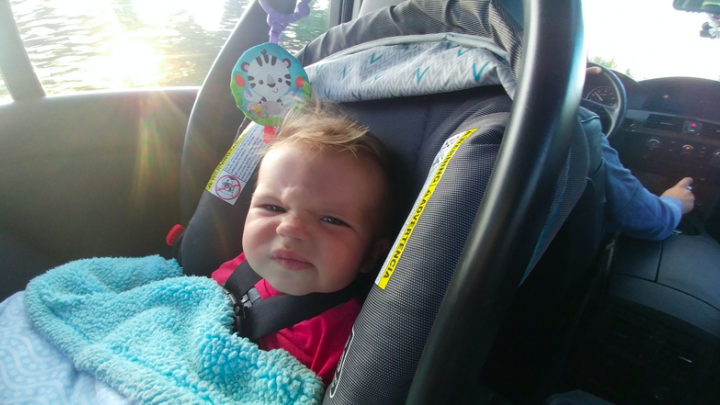(RxWiki News) During the winter, do you strap your children into their car seats while they're wearing a coat? If so, you may be putting them in danger.
As a general rule, children should not be placed in car seats wearing bulky clothing like winter coats or snowsuits, according to the American Academy of Pediatrics (AAP) and Consumer Reports. The padded clothing flattens with the impact in a car crash. This then leaves extra space between the harness and your child. As a result, your child can easily slip through the straps and be thrown from the car seat.
These tips from the AAP and Consumer Reports can help you keep your little ones safe and warm when traveling this winter season.
Car Seat Placement
The AAP recommends that young children ride in a rear-facing car seat in the back seat. The general rule of thumb holds that most children can remain in a rear-facing seat until age 2 or older.
Experts recommend rear-facing placement until the child reaches the top weight and height recommended by the car seat manufacturer. Be sure to check the recommendations for your particular car seat.
Children are much safer when they remain rear-facing as long as possible, said Dr. Benjamin D. Hoffman, an AAP injury prevention expert, in a press release this year.
Is Your Child's Coat Too Bulky?
Consumer Reports recommends these simple steps to check whether your child's coat is safe to wear while in a car seat:
- Sit your child with the coat on in the car seat and fasten the harness.
- Tighten the harness until you can no longer pinch any of the webbing with your thumb and forefinger.
- Without adjusting the harness, remove your child from the car seat and take off the coat.
- Place your child back in the car seat and buckle the harness.
- If you can now pinch the webbing between your thumb and forefinger, the coat is too bulky to be safely worn in the car seat.
How to Safely Transport Your Child in the Cold
If you find that your child's coat cannot be safely worn, there are some things you can do to keep your child warm and safe while traveling.
The AAP recommends the following tips:
- Keep the carrier portion of the car seat inside the house when not in use. This keeps the car seat from getting too cold and, in turn, reduces the loss of body heat in a cold car.
- Dress your child in thin layers. Start with tight-fitting bottom clothes like leggings or a long-sleeve bodysuit. Then add pants and warmer clothes on top, such as a thermal shirt. Next, layer a thin fleece jacket on top. The goal is to layer your babies and young children in one more layer than what you are wearing.
- Opt for hats, mittens, socks or booties that will help keep your child warm without interfering with car seat straps.
- Ensure the car seat straps are tight. Multiple layers may make it difficult to tighten the harness enough. If you can pinch the straps of the car seat harness, then the harness needs to be tightened more.
- You can place a coat or blanket over your child after buckling them in their car seat. Add a coat or blanket that can easily be taken off if your child becomes too hot as the car warms up.
- Use a car seat cover only if it does not have a layer under your child. Nothing should go under or between your child’s body and the harness straps. The general rule of thumb is if you use additional accessories that did not come with your car seat, they have not been crash tested.
This Rule Isn't Just for Kids
Adults and older children should also make sure their bulky winter coats aren't interfering with their seat belt. Doing so can keep them safer in the event of a crash.








